Born at St. James's Palace on at the present time in 1630, Charles II's life started peacefully in comparison with what was to come back after his father's accession to the throne.
By the point he was 19, Charles I had been executed by Parliament and Oliver Cromwell was ruling with an iron hand after abolishing the monarchy.
After failing in his try to proceed his father's monarchical struggle within the English Civil Struggle, Charles was pressured to flee England.
Upon his triumphant return and accession to the throne in 1660, Charles took bloody revenge on those that had murdered his father.
He dominated regardless of the Nice Hearth of London and, earlier than that, an enormous outbreak of bubonic plague.
As well as, he was identified for having a very energetic love life, wherein he stored quite a few mistresses and fathered 12 illegitimate youngsters – however no official heirs.
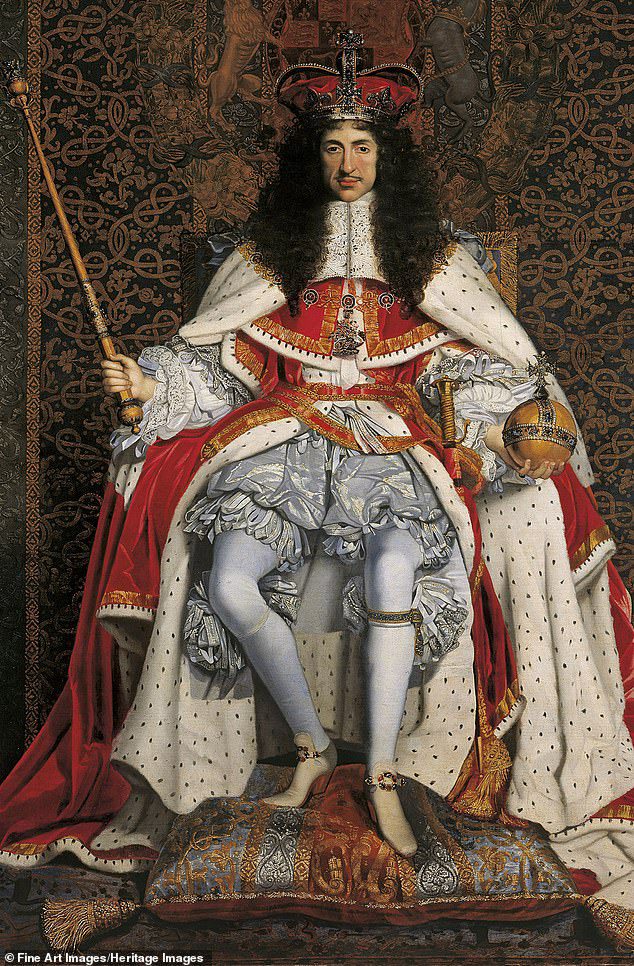
King Charles II (pictured) was born at St James's Palace on 29 Could 1630, the eldest surviving son of Charles I.
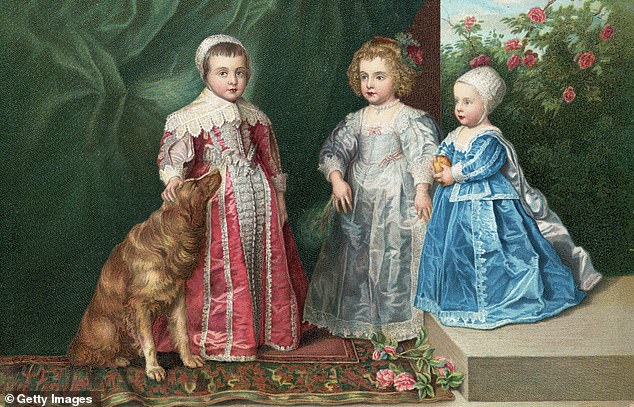
By the point Charles II (pictured along with his siblings) was 19, his father Charles I had been executed. Above: Charles along with his siblings James II and Henrietta

When Charles I used to be beheaded (pictured), Charles II had already fled and was residing within the Netherlands whereas the monarchy was being abolished in his homeland
A dramatic comeback…and escape
By the point Charles I used to be beheaded, his son had fled to the continent for the primary time.
However in 1650 he returned to Scotland and was topped at Scone, the place the Covenanter Parliament of Scotland declared him King of Nice Britain, France and Eire.
Not everybody welcomed Charles's return – notably England – and his coronation prompted additional battle.
After Charles's military was defeated on the Battle of Worcester, Charles needed to flee once more.
He spent a number of weeks on the run in England, at one level hiding in a big oak tree at Boscobel Home in Shropshire.
Because of this tons of of pubs throughout Britain are often called the Royal Oak.
Having efficiently evaded Cromwell's males, Charles arrived in France comparatively safely.
He bought his probability to return after Cromwell's dying in 1658. When Cromwell's son Richard resigned as his successor, Parliament determined to revive the monarchy.
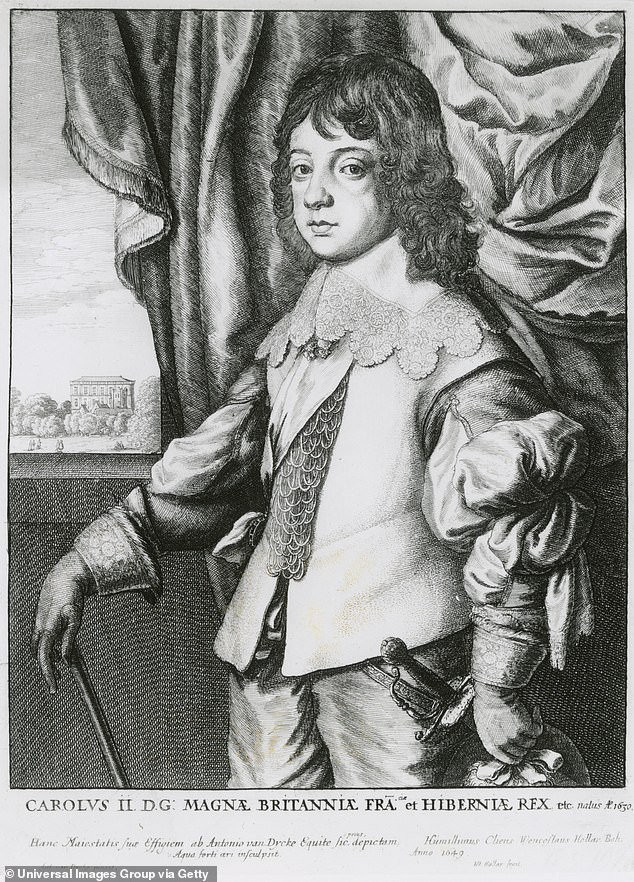
Charles II (pictured) is topped at Scone in 1651 – the Covenanter Parliament of Scotland declares him King of Nice Britain, France and Eire
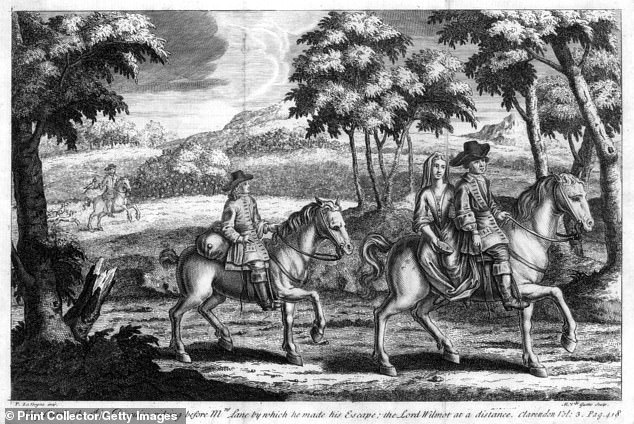
Charles II infamously saved his life by climbing a big oak tree at Boscobel Home to flee a pursuit by Oliver Cromwell.
His return to the throne
Charles II, now coming into his thirties, returned with a vengeance and sought justice for his late father’s premature dying.
After the coronation she was given an inventory – dubbed the 'homicide checklist' – containing the names of all 104 folks concerned in her father's trial and execution – together with the 59 who had signed his dying warrant.
King Charles II sentenced 19 folks to life imprisonment and ordered the execution of 9 others.
Regardless of his bloody revenge, Charles II turned often called the 'Merry Monarch' due to his love of events and leisure.
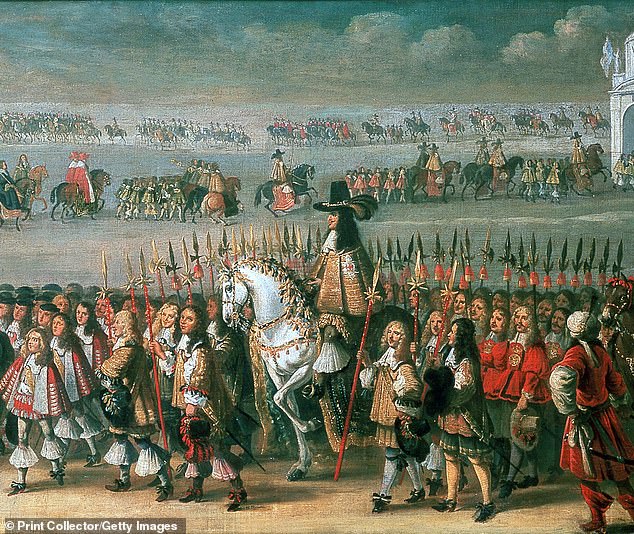
Procession from the Tower of London to Westminster on the eve of the coronation of King Charles II in 1661
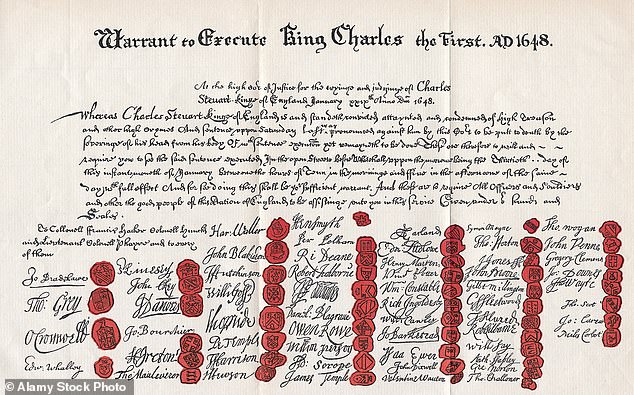
After the coronation, he was given an inventory – referred to as the 'homicide checklist' – of all 104 folks concerned in his father's trial and execution – together with the 59 who had signed Charles I's dying warrant (pictured)
His 15-year reign throughout the Stuart dynasty was as dramatic as his path to the throne.
In February 1665, the final main outbreak of bubonic plague struck London and by July had killed 100,000 folks.
The next yr there was an incredible hearth of London, which destroyed a lot of the capital.

The Nice Hearth of London in 1666 destroyed a lot of the English capital
How his attraction to the other intercourse led to his dying
The immoral Charles had many mistresses all through his life they usually fathered illegitimate youngsters – 12 in all.
However he failed to provide any heirs along with his spouse, the Portuguese Catherine of Braganza.
He misplaced his virginity to his former nanny, Christabella Windham, when he was 15 and she or he was in her 30s.
Charles's biggest love was the Welsh magnificence Lucy Walter, whom he met in his teenagers.

The womaniser Charles had many lovers all through his life and fathered illegitimate youngsters – 12 in all. Above: George Sanders and Linda Darnell within the 1947 movie Ceaselessly Amber
The connection quickly produced an illegitimate son, James, who later turned the Duke of Monmouth.
The mistress finest remembered right this moment was Nell Gwyn. She had grown up within the brothel and have become an actress.
The king was so infatuated together with her that he stored a nude portrait of her in a secret chamber in his bed room.
Nevertheless, Nell was jealous. She fearful that she was dropping the King's affection to a different actress, Moll Davis, so she took drastic motion.
He blended some emetic drugs into considered one of Moll's truffles, thereby soiling the royal bedsheets and dropping the king's favour.
Nevertheless, the king's eager curiosity in his mistresses finally will get him into plenty of bother.

Barbara Palmer, 1st Duchess of Cleveland, bore Charles II a number of illegitimate youngsters

Moll Davis, one other mistress of King Charles II. She was pushed out by her rival Nell Gwyn

King Charles II painted along with his mistresses Nell Gwyn, Louise de Kérouaille and Hortense Mancini by artist Kitty Shannon
When the Dutch defeated the English fleet in 1667, Charles was severely criticised for spending cash on his second mistress, Barbara Palmer, relatively than investing within the navy.
Britain's enemies had been additionally conscious of the king's sensuality. Louis XIV of France despatched the attractive Louise de Kérouaille to seduce his rival.
Louis hoped that she would promote the pursuits of France and Catholicism whereas serving as king.
The king in the end confronted failure after an immoral night time with Louise and two different mistresses in February 1685.
Throughout the night time he fell severely unwell and needed to be handled by the royal docs. As an alternative of serving to him, they unwittingly prompted him nice struggling as they administered a 'therapy' that did nothing however hurt.
The king died 4 days later, on 6 February 1685. He was buried in Westminster Abbey.
Leaving no inheritor, his brother James II took the throne.


